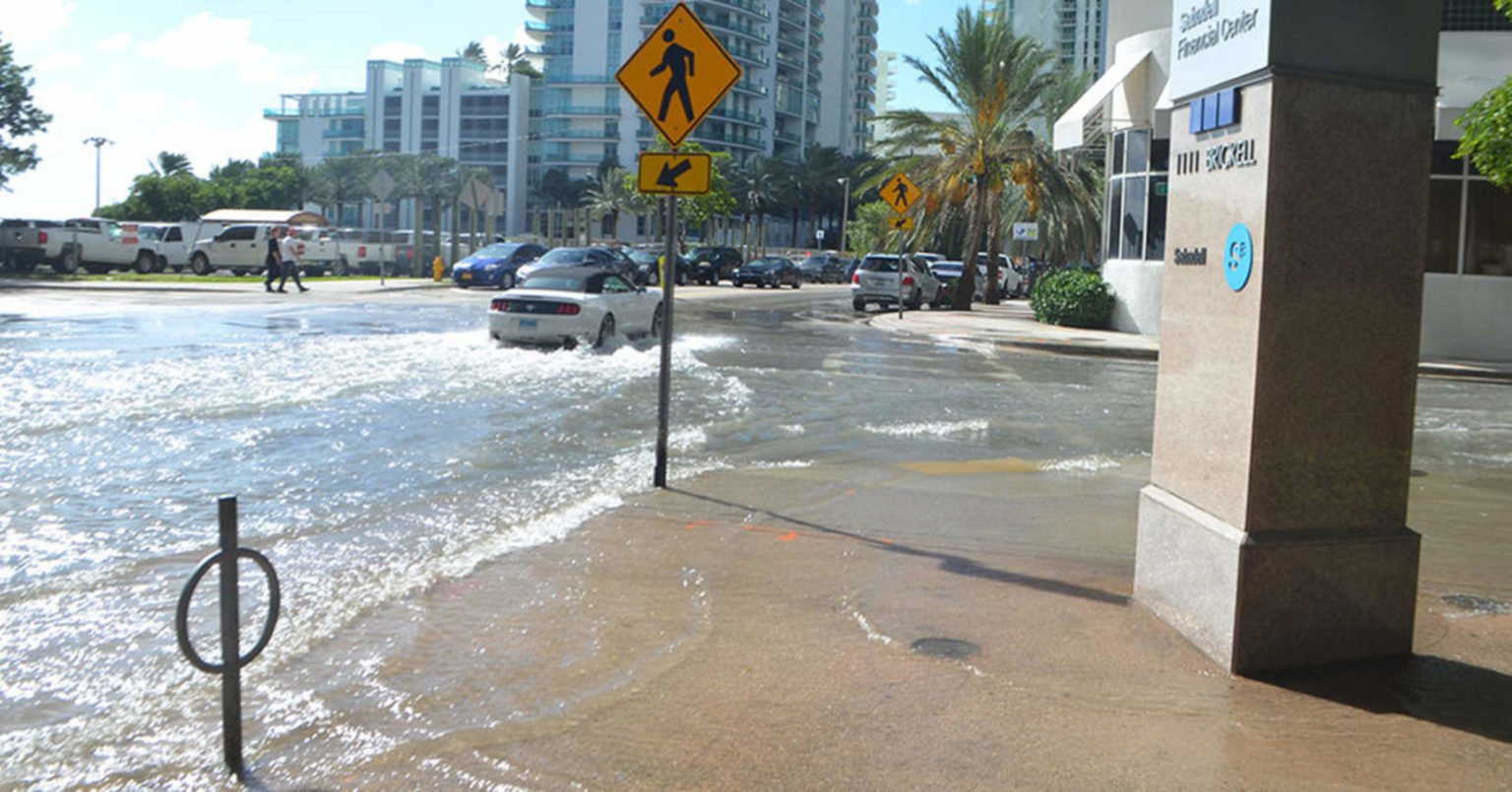By Olivia Rosane, EcoWatch. Crossposted with permission from EcoWatch.
More than 300,000 U.S. coastal homes could be uninhabitable due to sea level rise by 2045 if no meaningful action is taken to combat climate change, a Union of Concerned Scientists (UCS) study published Monday found.
The study, Underwater: Rising Seas, Chronic Floods and the Implications for U.S. Coastal Real Estate, set out to calculate how many coastal properties in the lower 48 states would suffer from “chronic inundation,” non-storm flooding that occurs 26 times a year or more, under different climate change scenarios.
Researchers combined property data from Zillow with three different sea level rise scenarios calculated by the National Oceanic and Atmospheric Administration (NOAA) and found that, in a high sea level rise scenario, $117.5 billion worth of homes, which currently house 550,000 people, would be in danger from chronic flooding within the lifespan of a 30 year mortgage.
“Even homes along the Gulf coast that are elevated would be affected, as they’d have to drive through salt water to get to work or face their kids’ school being cut off. You can imagine people walking away from mortgages, away from their homes.” UCS senior climate scientist Kristina Dahl told The Guardian.
The report further found that around 14,000 commercial properties worth $18.5 billion would also be at risk by 2045.
By the end of the 21st century, the numbers could rise to 2.4 million homes impacted, worth a total of $912 billion and home to 4.7 million people. If you add commercial properties, the total number of properties impacted by 2100 could be worth more than $1 trillion.
By the end of the century, homes and commercial properties currently worth more than $1 trillion could be at risk of chronic flooding. That’s as many as 2.4 million homes and 107,000 commercial properties. https://t.co/IbvfJBbwYp pic.twitter.com/oj27b5BjWu
— Union of Concerned Scientists (@UCSUSA) June 18, 2018
Florida would be the state most impacted by coastal flooding, losing more than 10 percent of its residential properties—about one million homes—by 2100 in a high sea level rise scenario. New Jersey would be second with 250,000 homes lost by 2100, followed by New York with 143,000 homes.
The report also found that around 175 different coastal communities could face chronic flooding that impacted 10 percent or more of their housing stock by 2045. Nearly forty percent of those communities already face poverty levels above the national average. The number of poor communities that stood to lose homes was highest in Louisiana, but low-income communities in North Carolina, New Jersey and Maryland were also at risk.
“People living in these doubly vulnerable communities stand to lose the most, yet have fewer resources to adapt to flooding or relocate to safer areas,” the report said.
If action is taken to limit greenhouse gas emissions, the impact of sea level rise could be less financially devastating to coastal property owners. Under NOAA‘s calculations for a moderate level of sea level rise, around 140,000 homes would be at risk by 2035 and more than 2.1 million by 2100. But in a low sea level rise scenario in which warming is limited to the levels set in the Paris agreement, the number of homes at risk by 2060 would decrease by nearly 80 percent, the study found.
#Louisiana Faces Faster Levels of Sea-Level Rise Than Any Other Land on Earth https://t.co/zCuAWpcH7U @NRDC @RobertKennedyJr @Waterkeeper
— EcoWatch (@EcoWatch) January 4, 2017
Main image: High-tide flooding in Miami, Florida, a state that could lose more than 10 percent of its residential properties to chronic flooding by 2100. Credit: B137, CC BY–SA 4.0
Subscribe to our newsletter
Stay up to date with DeSmog news and alerts






